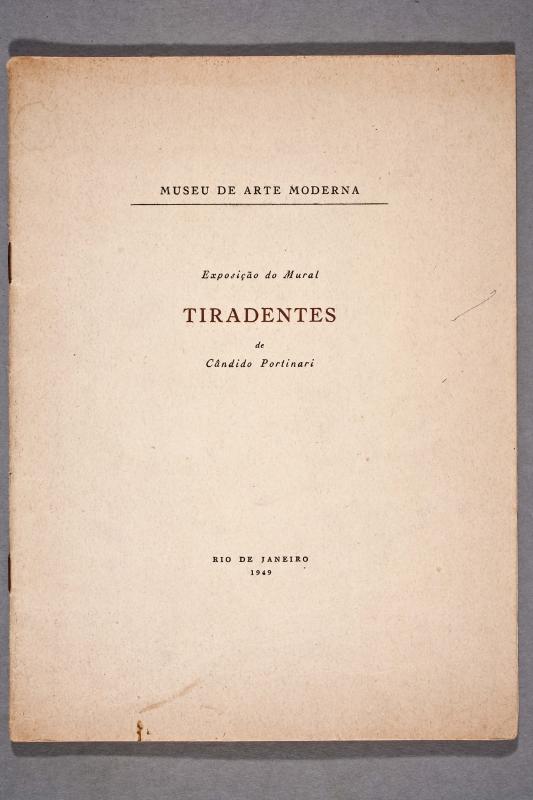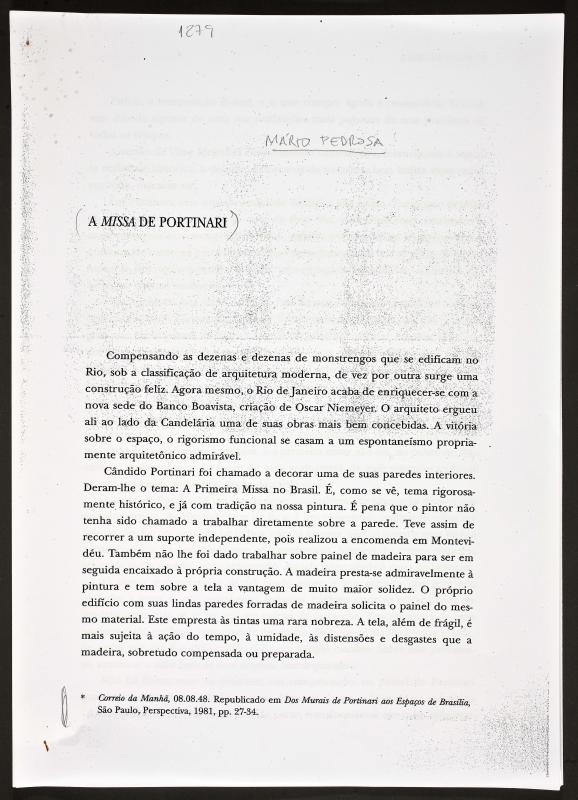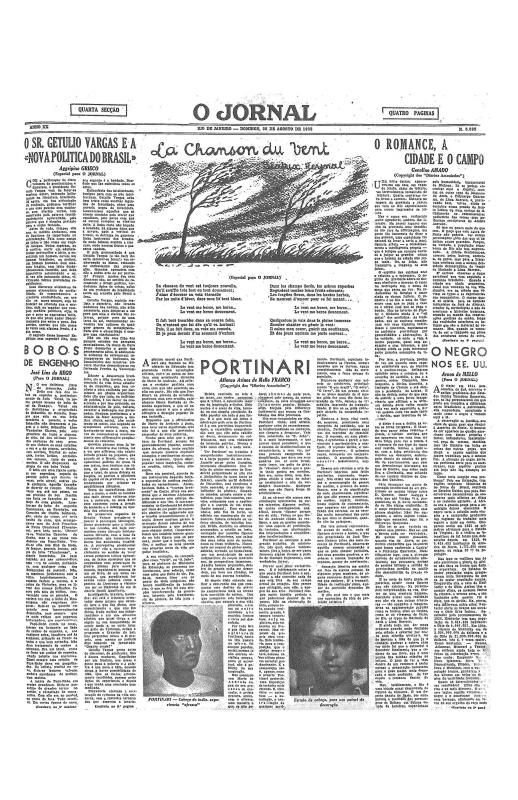The author identifies the different phases in the evolution of Candido Portinari’s work; he establishes them between the artist of the 1930s, who condemns social injustice in Brazil—in works such as Café and also in representations of migrant settlers—and the institutional painter of the following decade who assimilates the Brazilian territory (in works such as his Primeira missa [First Mass] after the discovery of Brazil). In accord with this interpretation, Portinari would distance himself from the “immediate,” and in certain measure “necessary,” social criticism, in order to create a “historical recapitulation” through which his work matured, and which was marked by “a higher poetic tone.” Writer Antonio Callado believes that in the works of that first period, Portinari showed Brazil the negligible intimacy that existed between the Brazilian man who imitated Europe and the United States, and the other, who lived the Brazilian reality and land in all its breadth, deeply connected to it in an almost indivisible manner. In the case of the historic panels, the figures take on a geometric quality, but on the other hand, he does not seek to illuminate a dead past, but rather “the current Brazilian drama” torn between a wretched life and “the hope” of building “a great nation,” as foretold by Portinari’s “noble” figures, who were based on chapters in the national history. In Callado’s opinion, this is why the visionary artist became “the greatest Brazilian painter.”




